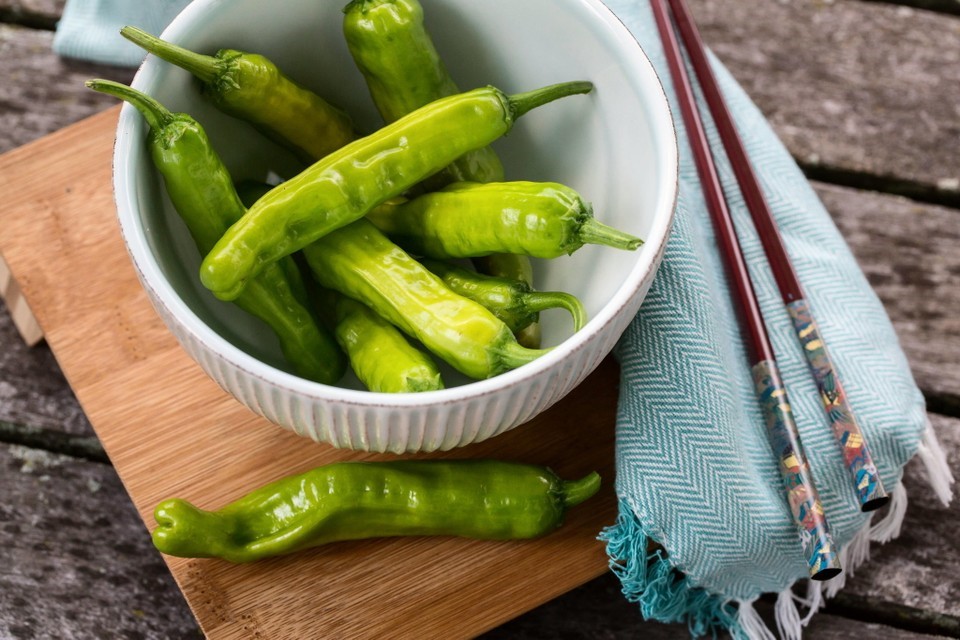Blog

Food in the News: Top Trendy Fruits & Veggies in 2018
It’s that time of year again: growing season! Many savvy seedsmen and women have ventured outdoors to plant their most-coveted crops. The benefits of at-home gardening are numerous and include: environmental sustainability, improved self-sufficiency, and access to fresh, economical produce. The plants that thrive in home gardens are as diverse as the gardeners who grow them. From foreign fruits in wild shapes and sizes to common vegetables with uncommon colors; planting novel crops can add both variety and vibrancy to your backyard and dinner plate,1,2 Here are the top fruit and vegetable treats that have plant experts in Pittsburgh asking for more.
Kohlrabi

This alien-looking vegetable is a member of the Brassica family and is indigenous to Ireland. It is a pollinator-friendly plant that is said to have a sweet, ‘cabbage-like’ flavor. The stem of the plant can be either roasted or eaten raw (much like broccoli), while its leaves are best-eaten fresh or sautéed (similar to kale or collard greens). Kohlrabi is available in green and purple varieties (see photo) and is ready to harvest when it's stem swells to mirror the size of a tennis ball. Not surprisingly, the vegetable is also a nutritional powerhouse, as it serves as an ample source of potassium, calcium, and vitamins A&C.1,3
Cape Gooseberries

Also known as Physalis or Ground Cherries, Cape Gooseberries resemble mini yellow tomatoes encased in delicate paper lanterns. The berries grow on a soft-stemmed, bushy plant that is native to Brazil. The mature (yellow) fruit is most-commonly consumed raw, dried, or jellied and is described as having a tomato, cranberry-like flavor. The fruit should not be consumed prior to maturity but is ready to be harvested once it has dropped from the mother plant. These wholesome fruits contain numerous antioxidants and are naturally high in fiber, calcium, and vitamin A.1,4,5
Tigernuts

The tigernut plant or ‘Chufa’ is actually a variety of grass that is indigenous to Egypt. Each plant produces numerous small, underground tubers that resemble peanuts (legumes). Like other root vegetables, the tigernut is naturally rough and rounded in appearance and adopts a earthy-brown color. Tigernuts are not to be eaten raw but are commonly consumed dried, or as a flour, oil, or milk. Nutritionally, tigernuts are a significant source of potassium, calcium, and magnesium. 1,6,7
Shishito Peppers

‘Dragon Roll’ or Shishito peppers are wrinkly, mildly hot peppers that are indigenous to East Asia. The mature pepper, ranging from 3 to 5 inches in length, tops out at 200 Scovilles, meaning that it is milder than a jalapeno. Shishitos are generally harvested once fully grown yet still green and are a wonderful addition to red sauces, appetizers, and stir-fry meals. Nutritionally, the peppers serve as an excellent source of vitamins A and C.2,8
Sources:
1. Top 10 Unusual Edibles to Grow in your Garden. Lovely Greens. Published March 19, 2018. Accessed June 13, 2018.
2. Weigel G. Looking forward to spring: 10 best new vegetables of 2018. Penn Live. Published 2018. Accessed June 13, 2018.
3. United States Department of Agriculture. Food Composition Databases Show Foods - Kohlrabi, Raw. National Nutrient Database for Standard Reference Legacy Release. Accessed June 13, 2018.
4. United States Department of Agriculture. Food Composition Databases Show Foods - Cape Gooseberry. National Nutrient Database for Standard Reference Legacy Release. Accessed June 13, 2018.
5. Ogden Publications, Inc. Knowing, Growing and Eating Cape Gooseberries - Real Food. Mother Earth News. Accessed June 13, 2018.
6. United States Department of Agriculture. Food Composition Databases Show Foods - Organic Tigernut Raw Snack. National Nutrient Databse for Standard Reference Legacy Release. Accessed June 13, 2018.
7. Tiger Nuts: Grow Your Own. Garden Culture Magazine. Published February 26, 2018. Accessed June 13, 2018.
8. United States Department of Agriculture. Food Composition Databases Show Foods - Shishito Peppers. National Database for Standard Reference Legacy Release. Accessed June 13, 2018.
Photo credit: Lovely Greens, Penn Live.

